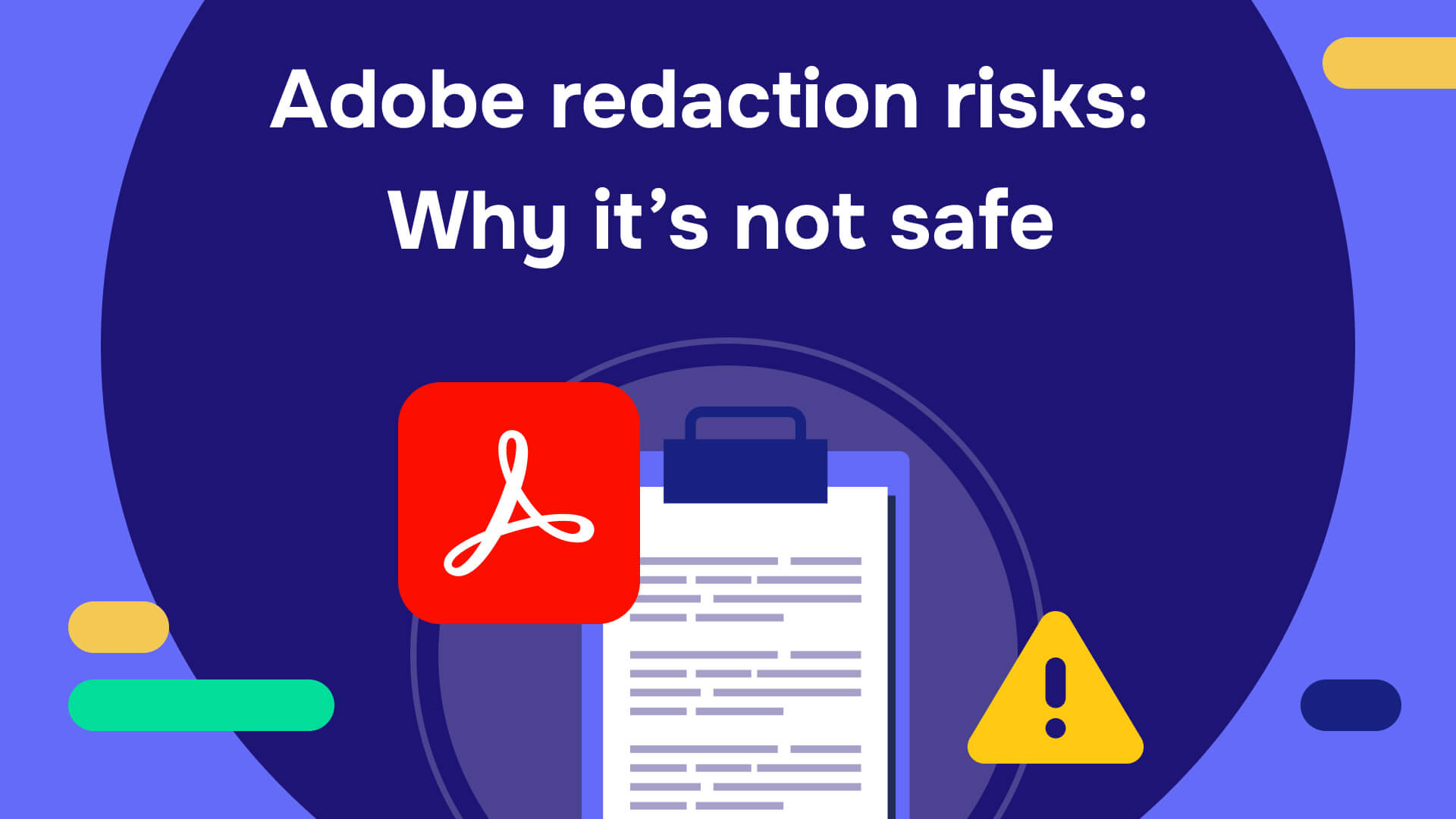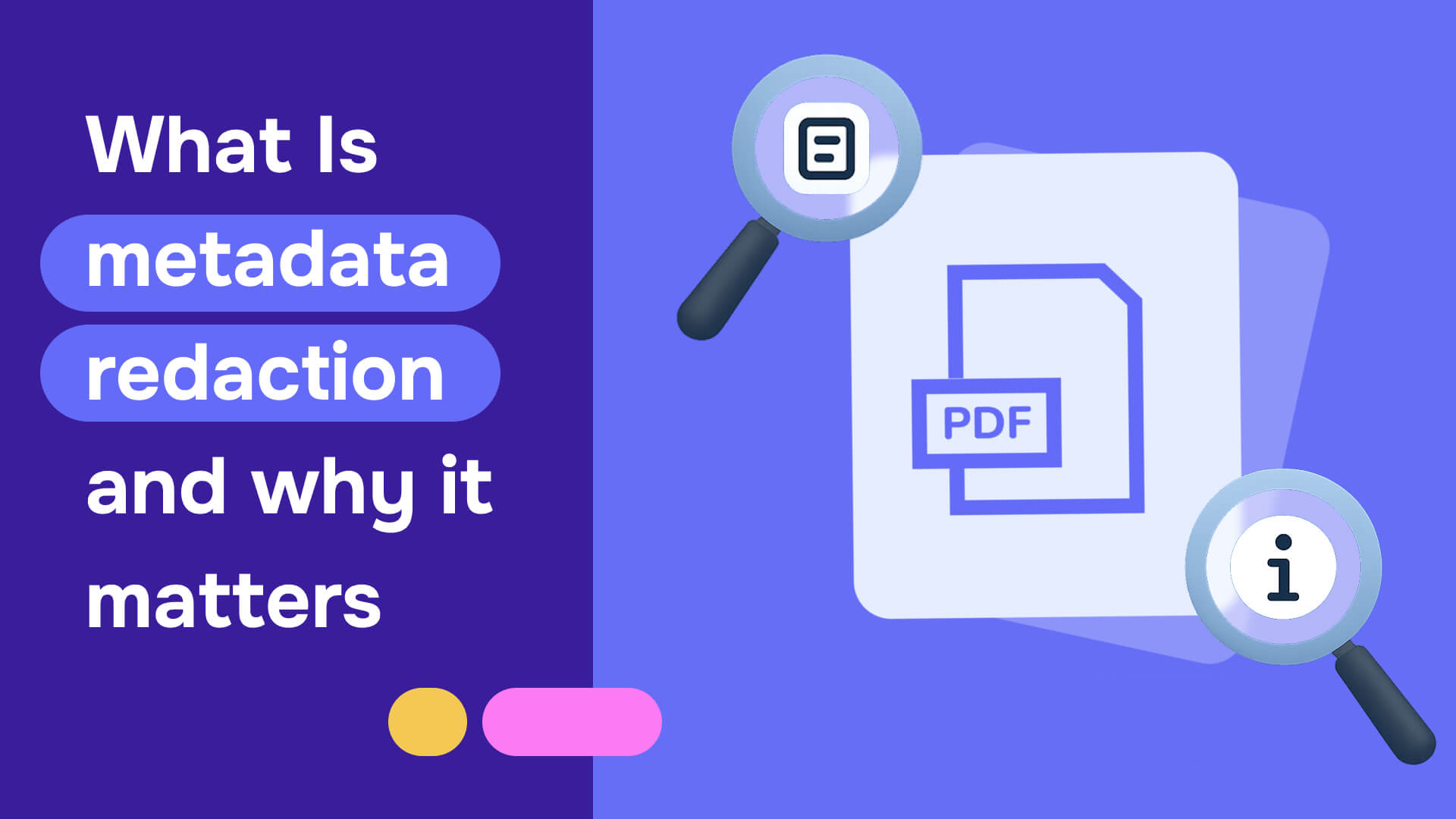Are you taking the necessary steps to safeguard your sensitive information in today's technology-driven world? Stay tuned to discover the top 10 rules for redacting documents and learn how to overcome common challenges faced by individuals and businesses in protecting their confidential data.
Understanding document redaction
Document redaction is the process of hiding or removing sensitive information from a document before sharing it with others. Its main purpose is to protect privacy and comply with regulations for redacting documents securely.

Sensitive information, like financial account numbers, bank account numbers, and an individual's social security number, must be concealed from public view. Other details like an individual's birth name, address, phone number, and email address might also need redaction to protect privacy and prevent identity theft.
Redaction is required for various reasons. Typically, redaction is needed when a document containing sensitive information must be transmitted or published. It’s critical to distribute the safe content of the document, without leaking confidential information.
Let's look at some examples:
- Court orders: When submitting documents to the court, lawyers and parties to proceedings must redact sensitive information to protect the privacy of the individuals involved. This helps prevent identity theft and other potential issues.
- Administrative proceedings: In administrative proceedings, agencies may require the redaction of sensitive data before documents are made public. This is to ensure the privacy of individuals and organizations involved in the case.
- Agency proceedings: Similar to administrative proceedings, agency proceedings also require the redaction of sensitive information to protect privacy and maintain compliance with regulations.
In all these instances, following the rules for redacting documents securely is essential to prevent the unintentional exposure of confidential information. Redaction ensures the protection of individual privacy and helps organizations avoid potential legal problems.
10 rules for redacting documents & best practices
Rule 1: Learn court rules and civil procedures for document redaction. Understand the rules courts and agencies enforce to redact documents to protect private information.
Rule 2: Use secure and trusted methods for redacting documents. Pick safe methods to remove private details, ensuring data security and avoiding issues.
Rule 3: Don't rely only on word processing programs for redaction. Ensure the revision history is not accessible and sensitive information is effectively protected.
Rule 4: Double-check documents to confirm sensitive information is redacted. Review your documents carefully to make sure private numbers, like financial accounts or social security numbers, are not disclosed.

Rule 5: Ensure redacted information cannot be recovered electronically. Take steps to prevent hidden details from being retrieved using file recovery techniques.
Rule 6: Store redacted documents securely in encrypted storage or password-protected folders to prevent unauthorized access or disclosure of any remaining sensitive information.
Rule 7: Use a consistent redaction method throughout your document. Apply the same redaction technique all through the paper for a neat and organized appearance.
Rule 8: Maintain a reference list of redacted information. Keep a record of redacted details to stay organized and remember what has been hidden.
Rule 9: Train staff on secure redaction techniques and procedures. Educate employees on the most effective methods for removing private information to ensure document security.
Rule 10: Communicate with stakeholders and inform all relevant parties, such as colleagues or legal counsel, about the redacted documents and the reason for the redaction.
Common errors and pitfalls to avoid while redacting
Error 1: Using incorrect redaction methods. Avoid using unsafe or disallowed methods that can lead to problems.
Error 2: Inadequately redacting image details. Expertly redact images to prevent revealing hidden text.
Error 3: Not redacting all instances of the same data. Ensure all occurrences of private details are removed.
Error 4: Assuming hidden text is secure without verifying. Confirm the safety of redacted text rather than assuming it's secure.
Error 5: Failing to train staff on redaction requirements. Provide training for employees on redaction techniques to comply with rules and regulations.
Using a reliable redaction solution like Redactable can help you avoid these common errors by providing a secure, efficient, and automatic way to redact all instances of sensitive information. With Redactable, you can ensure compliance, protect privacy, and maintain the highest standards of document security.
The importance of document redaction in various sectors
Document redaction is vital for organizations in a number of industries, such as legal, financial, medical, and educational fields. Each of these industries deals with sensitive information daily, making secure redaction an essential process.
1. Legal sector
In legal proceedings, redaction protects the identities of witnesses and victims, as well as sensitive case details. It prevents the accidental disclosure of confidential information, which could compromise the integrity of the judicial process.
Redacting documents correctly in the legal field is crucial to upholding the privacy rights of those involved and maintaining the confidentiality of the legal process.
2. Financial sector
In the financial industry, redacting documents helps to safeguard customers' account numbers, personal information, and other sensitive financial data.
Banks, credit card companies, and other institutions handle vast amounts of private information, and removing sensitive information is essential to prevent identity theft and maintain trust between these organizations and their customers.
By implementing secure redaction processes, financial firms can protect their clients' data from unauthorized access and potential misuse.
3. Medical sector
In the medical field, redaction is critical for preserving patient privacy and adhering to regulations such as the Health Insurance Portability and Accountability Act (HIPAA).
Healthcare providers, hospitals, and insurance companies manage confidential patient information, including medical histories, diagnoses, and treatment plans.
Proper redaction ensures that patient data remains confidential and that medical professionals comply with legal requirements to protect patient privacy.
4. Educational sector
Educational institutions, such as schools and universities, also handle sensitive information like student records, transcripts, and personal data.
The Family Educational Rights and Privacy Act (FERPA) mandates that educational institutions protect the privacy of students' educational records. Redaction practices help schools maintain compliance with FERPA and other applicable regulations, verifying that students' personal information remains private and secure.
Whatever industry you’re in, trust Redactable as the best solution for ensuring your sensitive data is kept safe and secure.
Read our complete guide (including video tutorials) on how to redact a PDF
The consequences of inadequate redaction
Failing to redact documents securely can lead to a variety of severe consequences, including:
Legal penalties: Non-compliance with regulations like HIPAA and FERPA may result in fines, lawsuits, or other legal actions against your organization.
Loss of trust: Inadequate redaction can erode the trust between an organization and its clients or stakeholders, potentially leading to lost business or damaged relationships.
Damage to reputation: The exposure of sensitive information can harm an organization's reputation, making it challenging to rebuild credibility and regain public trust.
Securely redacting documents is crucial across various industries. It ensures the confidentiality of sensitive information and helps organizations maintain compliance with relevant regulations.
Discover Redactable: An ultimate solution for safe and efficient document redaction
Do you want to keep your documents safe? Redactable is the solution you need.
A quick look at Redactable and its features

Redactable is an easy-to-use online platform that helps you remove confidential information from your documents. Using artificial intelligence to instantly and accurately find and protect personal details like names, addresses, and phone numbers, Redactable automates the redaction process, enabling you to disclose any document with confidence.
The top features and benefits of Redactable for document redaction
- Easy setup at any scale - From task management to setting up a review process, we make it a breeze for you to set up and work on large redaction projects.
- Document scrubbing - We remove the metadata and any hidden document elements to ensure that the redaction is permanent and cannot be hacked.
- Collaborate in the cloud - Collaborate & redact simultaneously with colleagues on large redaction projects using our cloud-based platform. Invite your team.
- Built-in AI features - Our advanced AI features can auto-detect confidential data in your document, or you can search for the terms you want to redact.
- Integrations - Import your existing documents from your favorite services such as Box or Dropbox for easy document management.
- Redaction Certificates - Redaction Certificates are automatically generated so you can keep track of who was redacting and at what time.
Follow the rules and keep sensitive information onfidential
Document redaction is vital for keeping sensitive information confidential and ensuring privacy. Following the rules for redacting documents securely is crucial to avoid potential legal issues and protect individuals' privacy.
Redactable is the ideal choice for those who need a reliable and efficient way to redact documents securely.
With its AI-powered auto-redaction capabilities, redaction certificates for regulatory purposes, and compliance with GDPR and HIPAA regulations, you can trust that your sensitive data will be protected.
On top of that, Redactable provides a user-friendly interface and supports various file types, making it a versatile and effective tool for all your document redaction needs.
If you're looking for an efficient and secure method to redact sensitive information from your documents, don't hesitate to try Redactable for free today or Book a Demo.

.png)





